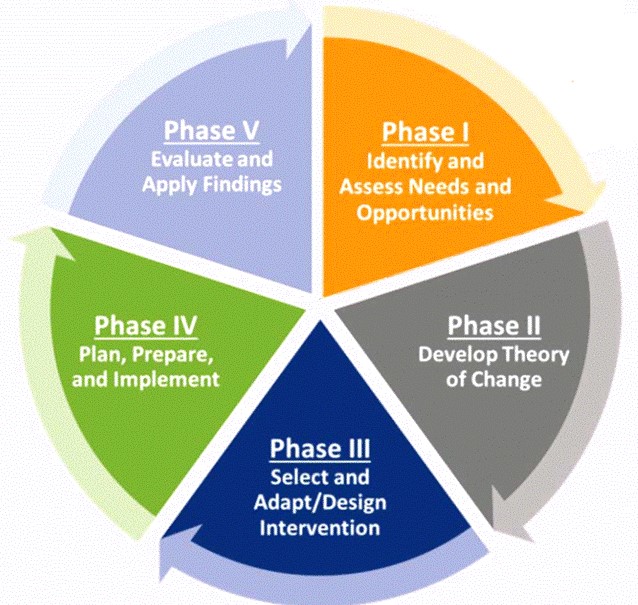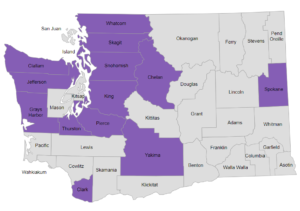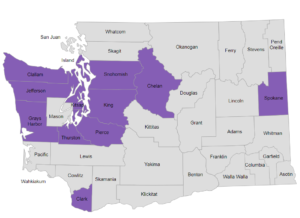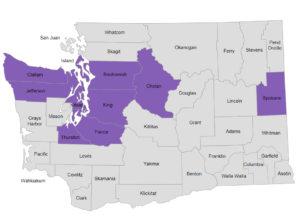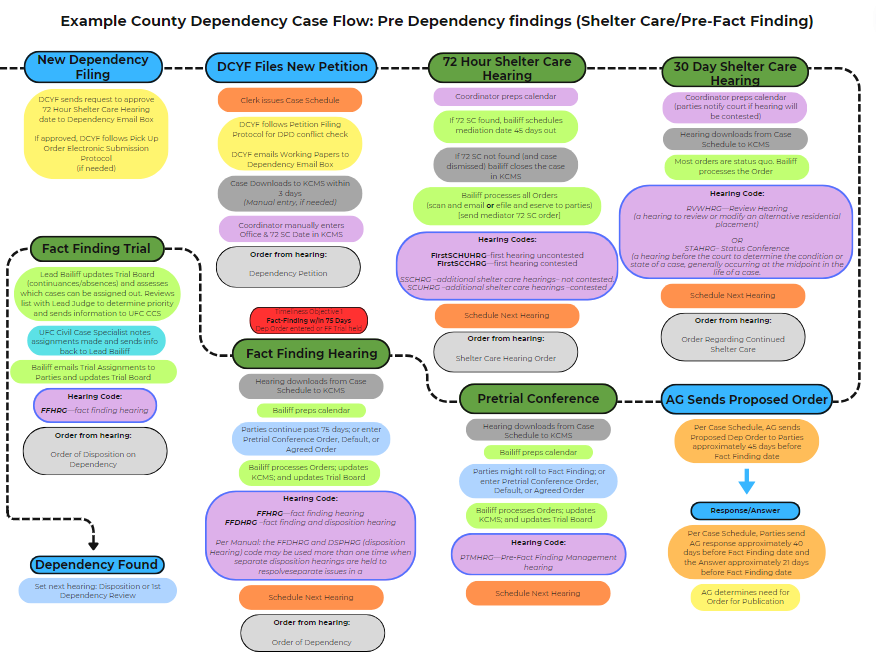Phase III: Develop or Select Solutions
Milestones: Identify & research the best possible solutions, the best intervention has been selected with justification for that choice, & minimum specifications have been identified and related to barriers, with core components clearly defined.
Reminder, in our Race Equity example case:
The outcome we are hoping to meet is:
In a period of one year starting Jan 2022 and ending Dec 2022, we will increase the participation of BIPoC families in our FTC.
Using research, data, our expertise, and the Best Practices for our court as a guide, our committee determined three areas of need we would like to focus on because they directly impact the outcome we are trying to achieve. These areas are: representation, creating an environment of trust for BiPOC individuals in our courts, and revision of our acceptance and referral process which we choose in Phase II.
Identify & Research the Best Possible Solutions
In our Example:
We wanted to take advantage of the ideas of our team, so we used a liberating structure, conversation café, to come up with some interventions that would increase the number of families of color that our court serves. The best interventions that came from that conversation are documented below.
- Hire a Recovery Support Specialist or Peer Support Specialist that is a person of color and has lived expertise
- Standardize eligibility criteria to those listed in best practices & Compare to other courts with more diverse participants
- Remove criteria for eligibility that is too subjective or open to bias (for example, “readiness for change” doesn’t predict success in the program)
- Develop a process to better advertise to BIPoC families
- Determine and remove barriers to referrals
- Hire a consultant with expertise in the experience of racism in the courts, development of trust, and/or change and trust development
Select the Best Intervention and Justify that Choice
It is important that we focus on the intervention that will best help us meet our goal. Depending on the capacity of our group we may be able to fulfill multiple interventions in our change management outcome. If we try to implement them all at once, however, we risk giving a mediocre effort to multiple interventions and being unable to track which success led to the change in our data.
In our Example
Our team members volunteered to research each of these interventions further. They looked for other courts that have used similar strategies, talked to technical assistance providers and looked into potential funding streams. For our team, this took two weeks and we planned another meeting on the day of that deadline before concluded our meeting.
When we met again, team members shared what they learned.
1. Hire a recovery support specialist:
- This idea has long term support but will not be feasible until we make and approve a new budget or find another revenue stream.
2. Standardize eligibility criteria:
- Criteria are available that meet our needs in this intervention, they will need to be modified for our specific court.
3. Remove eligibility criteria that are too subjective:
- Example criteria are available, as are our current criteria for comparison. More research is needed on why objectivity is a better choice than subjectivity criteria here (based on concern of some group members).
4. Develop a process to better advertise to BIPoC families:
- This is a feasible plan, but will take some time to start. It also does not seem to require the expertise of this particular group as no one is experienced in marketing or skilled in design.
5. Determine and Remove Barriers to Referrals:
- The team member reporting in this area did not have enough time to determine who does and does not know about FTC within the DCYF professionals that might make referrals, the local CASA program, and all of the parent attorneys in the county. A larger scale survey and education effort might be needed.
6. Hire a consultant:
- The Judicial Officer determined this isn’t possible with their current funding, but mentioned it to the FTC team at AOC. They are looking into possible options to help the team with this idea.
After discussing this result with the group we determined that the most immediately feasible intervention would be to change our eligibility criteria. This also seemed to be the one that would give us the most success to reaching our objective. While we explore this option, it also gave us some more time to research the others.
We decide as a team that it would be possible to change our subjective areas of the acceptance process into more objective criteria. This meant we could work on both interventions 2 and 3. We also decided collectively to set a quarterly meeting for the next year to revisit this list of interventions and determine if any further capacity has been developed.
Minimum Specifications Identified & Core Components Defined
To be successful, we must choose the intervention with the best ability to address the root cause of our issue and determine if our group has the power to make the needed changes.
In our Example:
We are hoping to increase the number of BIPoC families our court serves. Our team is primarily made up of members of the court, so we are able to easily review court policy and procedure. We also have the Best Practice for Family Treatment Courts as a guide which shows that changes to entrance criteria can increase the diversity of an FTC, and gives us ideas about how to do this.
The core components of our intervention are:
- To research the FTC Best Practices and any other background research necessary
- To develop the new criteria
- Determine a date of implementation
- Build a timeline for data collection
- Determine what we would consider to be a successful intervention
We also looked back at our original discussions from Phase I and II to make sure this intervention fits within our original theory of change.

